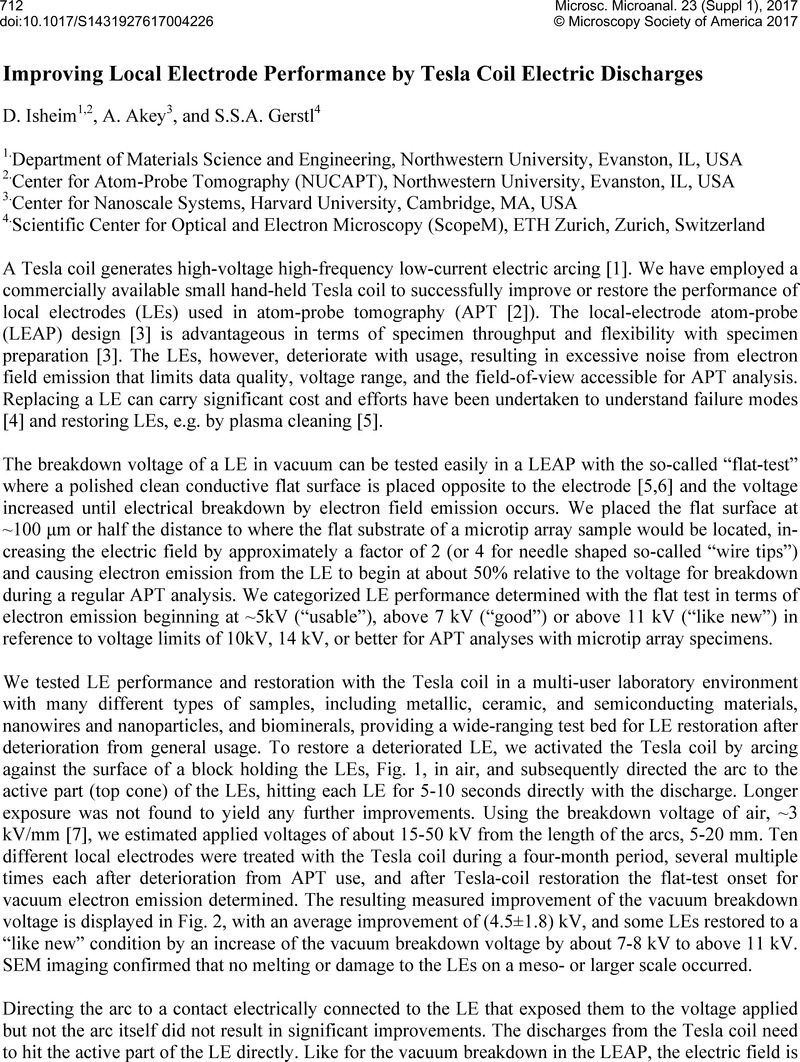No CrossRef data available.
Article contents
Improving Local Electrode Performance by Tesla Coil Electric Discharges
Published online by Cambridge University Press: 04 August 2017
Abstract
An abstract is not available for this content so a preview has been provided. As you have access to this content, a full PDF is available via the ‘Save PDF’ action button.

- Type
- Abstract
- Information
- Microscopy and Microanalysis , Volume 23 , Supplement S1: Proceedings of Microscopy & Microanalysis 2017 , July 2017 , pp. 712 - 713
- Copyright
- © Microscopy Society of America 2017
References
[1]
Plesch, PH
“High Vacuum Techniques for Chemical Syntheses and Measurements”. Cambridge University Press
Cambridge
2005). p. 21.Google Scholar
[3]
Larson, DJ, et al, “Local Electrode Atom Probe Tomography: A User's Guide”. Springer
New York
2014.Google Scholar
[7]
Rigden, JS
“Macmillan Encyclopedia of Physics”. Simon & Schuster
New York
1996). p. 353.Google Scholar
[8] The LEAP 4000X Si atom-probe tomograph at NUCAPT (Northwestern University) was acquired and upgraded with equipment grants from the MRI program (NSF DMR-0420532) and the DURIP program of the Office of Naval Research (N00014-0400798, N00014-0610539, N00014-0910781). This work made use of the EPIC facility of the NUANCE Center at Northwestern University. NUCAPT and NUANCE received support from the Soft and Hybrid Nanotechnology Experimental (SHyNE) Resource (NSF NNCI-1542205) and the MRSEC program (NSF DMR-1121262) through Northwestern’s Materials Research Center. NUANCE received support from the International Institute for Nanotechnology (IIN); the Keck Foundation; and the State of Illinois, through the IIN. Part of this work was performed at the Center for Nanoscale Systems (CNS) at Harvard University, supported by NSF NNCI-1541959.Google Scholar




